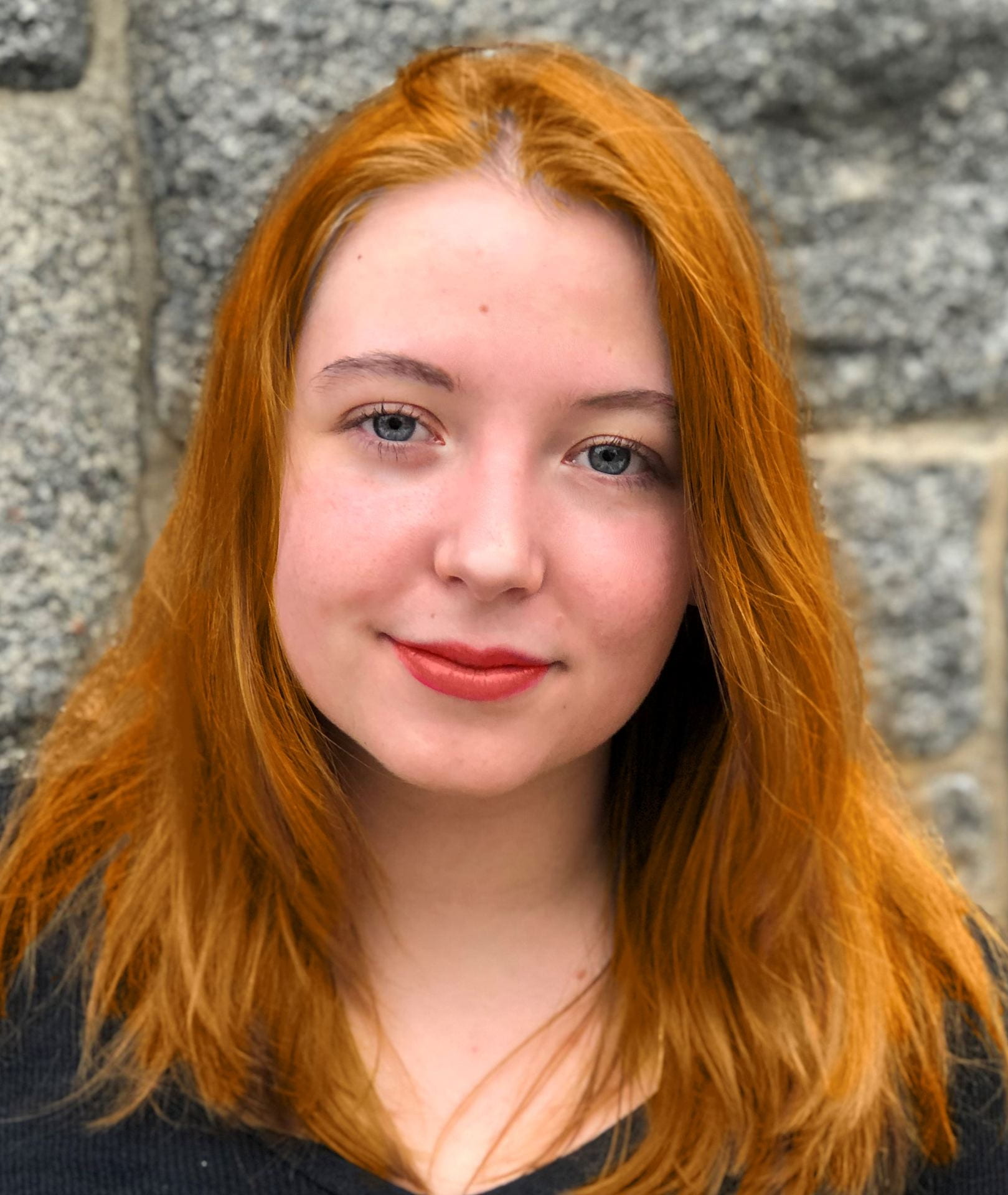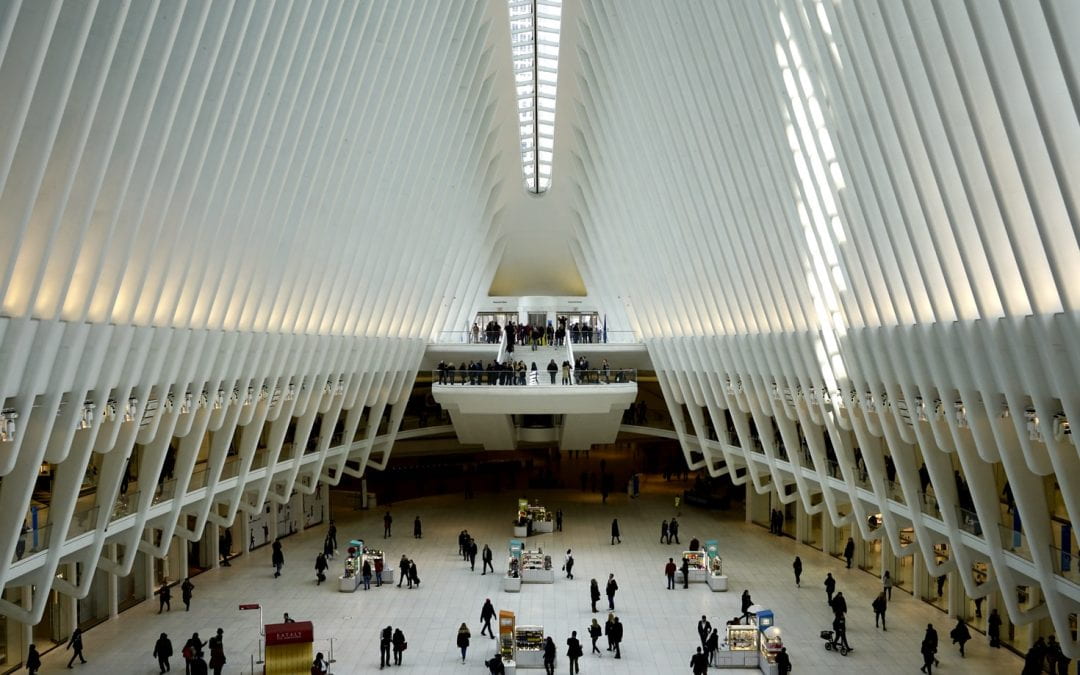I was sixteen when I first saw the Oculus. It had opened to the public months before in March of 2016, but I hadn’t heard about it. At sixteen I had the single-mindedness of the briefcased men I commuted into Manhattan with each day. I took one of two LIRR trains, went to one of two sweat-marred studios, and trained with dozens of ballerinas who looked like one of two things: me, or me but better. Then I returned home.
On one oozy August afternoon, I traded my usual train home for a 1 to Rector Street. I wandered the Financial District, the one part of the city I could never remember going to previously. I don’t remember how I made my way to the Oculus; I only remember its spires fracturing the street in front of me. White steel crested above the pavement in twin sheets, jabbing at its cream limestone and blue-skied glass neighbors. Architect Santiago Calatrava called the structure a dove, a symbol of hope in the shadow of the Twin Tower footprints. I didn’t see wings. Taking in the curved white beams of the Oculus, my brain sprang into an association game: open book, porcupine, roller coaster, kebab skewers. With the Freedom Tower looming behind it, I could see a five-point star with the blue skyscraper at the head. I knew the city had built a 9/11 Museum, and I wondered if this was it. The soft swell of white coupled with jagged edges. Something something hope and persistence, something something symbolism. I ventured inside without knowing the Oculus and its sci-fi villain name. A trickle of people followed through the door after me: three well-coifed middle-aged women in tailored trousers and sleeveless blouses; a mother and a son wearing his lunch and clutching her hand; a man dressed as a bike courier, bikeless.
After the double doors, my head was drawn upwards. A giant hall, ceiling vaulted and holy over a double-decker bath of people. The glass between each white beam drenched the floor in sunlight. The floor should have been tiger-striped with sun, but it wasn’t; a golden glow suffused the gallery, thousands of small lights embedded in floors and ceilings. At first glance, the Oculus is a monument to light and white paint. The building could have fit billboards or murals, but nothing attempted to contextualize the Oculus. She was all dressed up with nowhere to go.

My favorite ballet then—and the only one, I was told by my ballet master, that could put my overlong chimp arms to use—was Giselle. In Act II, jilted women killed by heartbreak haunt their lovers, forcing them to dance until they collapse dead or painfully aware of their heartbeats and barbed breath scratching their throats. Myrtha, the ruler of the spirit women, bent her back so improbably that her head was often level with her tailbone. In this cambre position, the audience should be able to trace the twin arcs of her ribs through her bodice. The spirit women, called Wilis, should be as jagged as possible while still looking ethereal. They are intermediaries between life and death, vulnerable and full of vengeance. Wilis wear white satin and rim their buns with the wilted flowers left at their graves. But they too had nowhere to go; the underworld does not welcome murderous proto-feminists, and the aboveworld sided with the jilters.
The stores of the Oculus sank into peripheral walls. They pedaled Italian leather shoes and notebooks, Apple computers, and watches expensive enough to be referred to as timepieces. Two levels of carefully-staged storefronts with summer sales, profiles hidden by white columns and movie-heaven light. Under the gaze of embroidered Lacoste alligators, each buttress looked like a rib stripped clean. The ribs met at a skylight sternum. Visitors traipsed through a pleural cavity. Ballet is about the body— how it cuts through space, how it avoids or reinforces physics— but I had never felt as aware of my physical presence as I did inside the Oculus. As I dodged and weaved through tourists, I imagined my ribcage worn outside my body like a vest. A shopping mall memento mori. Calatrava, for all his talk about hope, dismissed the viscerality of seeing bones displayed feet from a famous graveyard.

Around the time I first visited the Oculus and started rehearsing Giselle, I finished Antigone, summer reading for English class. Sixteen and discovering righteousness— Antigone starts to mean something, or at least you can imagine a world in which you understand its meaning. On the train ride home from Manhattan, I remembered a quote I (illegally) underlined in my school-issued copy. “We have only a little time to please the living. But all eternity to love the dead.” At the end of Giselle, the man who betrayed the eponymous dead girl stands at her grave and weeps in theatrical chest heaves. They knew each other for at most a few days, but the Wilis, unable to dance him to death, condemned him to weep forever. Giselle must move on to haunt someone else’s former lover, move on to the next stone cross. Across media, we’re always trying to make room for the living making room for the dead, often unsuccessfully. Where do we put the bones? To stand sentinel in the living world or to lie unseen in some kind of peace.
The Oculus is the one building the pandemic suited. It lay echoing and cavernous for most of the spring. The Westfield World Trade Center, the mall it houses, only reopened in August. Subway ridership fell by up to 90 percent once New York City lockdown began. When I passed under the flap of its ramparts on my evening walks, the Oculus was almost empty. Occasionally, someone would materialize inside as if the steel bones had stem cells regenerating entire people. Photos flitted around Twitter: this is what the Oculus looks like empty, isn’t it bizarre?

In April, I took the subway from the World Trade Center and walked through the Oculus. Two people headed out the door, hands intertwined. No one else. In its sanitary white, I could appreciate the shadow of hungry ribs, the elephant graveyard curving above my head. I could stand in the center of the lower floor and peer up without being buffeted by H&M bags or investment bankers sprinting to catch the A train. The Oculus made sense empty, somber and balletic. Without camera-eyed tourists and charging commuters, Calatrava’s design captured a feeling, a sense of awe. But then you look around at eye level, see the shuttered and gated stores and their wasted capitalistic potential. I can imagine the Oculus before storefronts, maybe when brands were still in talks with Calatrava’s architecture firm, and the space against the interior walls was exactly that—space. I can see an architect, a builder, a someone looking around the bone temple and feeling their breath catch in their chest. Maybe they paused the next time they were set to begin work on the new Nike. Then they continued. Shopping malls please the living after all.
I can imagine a life for the Oculus where it sits empty all year, a continuation of the twin reflecting pools and (lackluster) 9/11 museum. The Macbooks and AmEx Platinum shoppers are turfed out to find another mall, maybe the newer steel ribcage at Hudson Yards. But would emptiness do anything? Reclaiming shopping space in the Financial District, where investment banks and consulting firms style their office buildings after Apple products, seems arbitrary. Pretending people will treat an empty Oculus as a site of mourning when tourists take peace-sign selfies with the etched names of 9/11 victims seems naive. Even ignoring the cost of New York real estate, the Oculus couldn’t exist empty permanently and make sense. But its current role as a skeletal shopping extravaganza also stands at odds with reason. The Oculus’s faults run deeper than design flaws. Like the Wilis or Antigone’s traitor brother, the building chafes against two realms. It is trapped in a purgatory of its own making.

Julia Spande
Writer
Ballet is about the body— how it cuts through space, how it avoids or reinforces physics— but I had never felt as aware of my physical presence as I did inside the Oculus.
The Oculus made sense empty, somber and balletic. Without camera-eyed tourists and charging commuters, Calatrava’s design captured a feeling, a sense of awe.
